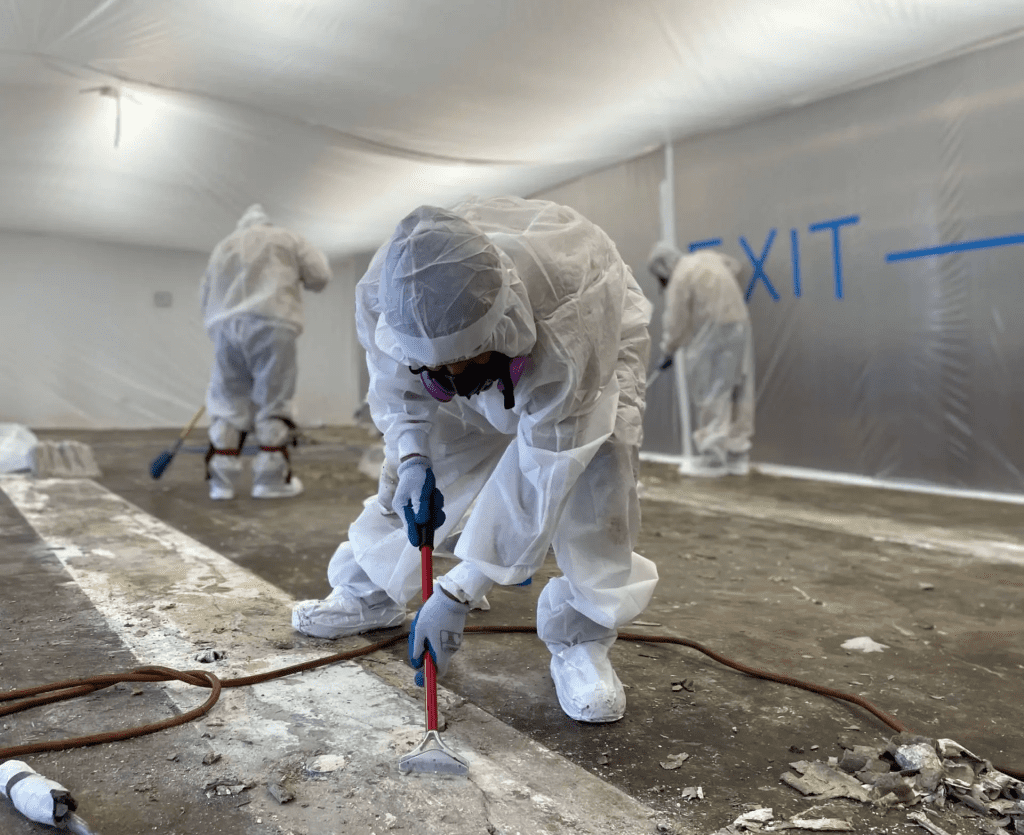Mold and asbestos remain two of the most significant environmental health hazards in buildings especially in older housing stock, commercial properties, and infrastructure across New York and Long Island. As building materials age, water damage accumulates, and renovation or demolition activity increases, the risk of exposure rises. Because of that, state and local governments enforce strict regulations governing mold remediation and asbestos abatement to protect public health, tenant safety, and environmental quality.
In 2025, regulatory updates, stricter enforcement, and evolving standards mean property owners, landlords, contractors, and inspectors must stay up to date. In this blog post, you’ll get a comprehensive overview of mold and asbestos laws in New York and Long Island, including licensing, procedural requirements, penalties for non-compliance, and practical steps to remain compliant.
1. Mold Regulation in New York State & Local Areas
1.1 The Legal Framework: Labor Law Article 32 & the Mold Program
New York State has codified mold regulation primarily under Labor Law Article 32, which establishes licensing requirements and minimum work standards for those performing mold assessment, remedial work, or abatement. The Mold Program under the Department of Labor enforces these rules. Department of Labor
Key components include:
-
Licensing / Training: Contractors cannot advertise or conduct mold assessment or remediation unless they are licensed. Department of Labor
-
Minimum Work Standards: These include requirements such as independent assessment (you can’t do both assessment and remediation on the same property), use of personal protective equipment, posting project notices, and providing post-remediation assessments. Department of Labor
-
Disclosure & Complaints: The law provides avenues for submitting complaints if a remediation project violates standards. Department of Labor
Because of these mandates, beginning in 2025, New York is increasing oversight, license checks, and potential penalties for unlicensed or substandard mold work. environmentaleducation.com
1.2 Local Laws: New York City Example
In New York City, Local Law 61 of 2018 adds specific requirements for larger buildings (10+ dwelling units or large non-residential properties). Among those:
-
Licensed mold remediation contractors must file a Mold Remediation Work Plan Notification and submit it to the NYC Department of Environmental Protection (DEP). NYC Government
-
A Post-Remediation Assessment Form / Certification must be filed by a licensed mold assessor after work is complete. NYC Government
-
Non-compliance can result in penalties between $800 and $10,000 depending on the violation. NYC Government
Thus, in NYC and parts of Long Island that fall under city jurisdiction or local mandates, property owners and contractors must adhere to both state and municipal mold regulations.
1.3 Emerging Legislation & Trends
As of 2025, new bills such as A446 (2025) aim to strengthen mold remediation oversight in public housing authorities by imposing faster timelines for remediation after reporting mold. New York State Senate+1
State-level efforts continue to modernize enforcement and tighten licensing. Stay alert, because additional reforms are likely.
2. Asbestos Regulations in New York State & Local Jurisdictions
Asbestos remains embedded in many older constructions (insulation, floor tiles, roofing, pipe wrapping, etc.). Disturbing asbestos-containing materials (ACM) without following the rules can result in serious health risks and legal exposure.
2.1 State & Federal Framework
Multiple layers of regulation apply:
-
NY State Department of Labor — Code Rule 56: This is the main NYS regulation on asbestos, governing removal, encapsulation, repair, and disturbance of asbestos materials. Department of Labor+2Department of Labor+2
-
NY State Department of Health — 10 NYCRR Part 73: This governs training of asbestos workers and safety training providers. New York State Department of Health+1
-
NYS DEC: Controls asbestos waste, transport, and disposal under 6 NYCRR Part 360 and 6 NYCRR Part 364. New York State Department of Health+1
-
Federal Oversight:
-
EPA’s National Emission Standards for Hazardous Air Pollutants (NESHAP, 40 CFR Part 61 Subpart M) regulates asbestos emissions during demolition or renovation of regulated structures.
-
AHERA (Asbestos Hazard Emergency Response Act) applies to schools.
-
OSHA enforces worker safety in construction and general industry settings.
-
2.2 Key Requirements & Procedures
Some essential obligations under NY’s asbestos laws:
2.2.1 Pre-Renovation / Demolition Asbestos Surveys
Before any renovation, repair, or demolition that might disturb asbestos, a certified asbestos inspector must perform a thorough survey. That includes identifying Presumed Asbestos Containing Material (PACM), suspect materials, and conducting bulk sampling if needed. Legal Information Institute+2Department of Labor+2
If no survey is done for a demolition project, the building must be assumed to contain asbestos, and procedures for asbestos projects must be followed. Legal Information Institute+1
The inspection report must be submitted to the local permit-issuing authority and kept on-site during any abatement work. Legal Information Institute+1
2.2.2 Licensed Contractors & Certifications
Asbestos abatement work may only be carried out by licensed and certified contractors and workers. NYS recognizes multiple roles: asbestos handler, supervisor, project designer, project monitor, inspector, etc. environmentaleducation.com+3nycosh.org+3New York State Department of Health+3
Workers must complete training in accredited programs, and certifications must be kept current. nycosh.org+1
2.2.3 Notification & Permitting
Large-scale asbestos abatement projects often require advance notification to state or municipal agencies (e.g., Asbestos Control Bureau). For instance, in NYC you must notify the DEP at least 7 days before beginning abatement. NYC Business+1
NYC has recently updated its asbestos rules effective February 14, 2025, clarifying definitions, permit expirations, and expanding requirements (e.g. work in confined spaces) under Title 15 of the NYC DEP rules. rules.cityofnewyork.us+1
2.2.4 Air Monitoring, Clearance Testing & Enclosure
During abatement, air sampling and monitoring must be done to ensure asbestos fibers are not released outside containment. This includes pre-, during-, and post-project sampling. nycosh.org+2FindLaw+2
After removal, clearance testing must confirm that fiber levels are below acceptable thresholds before re-occupancy. nycosh.org+1
Enclosures, negative pressure systems, and strict control of work area access are required for safety. New York State Department of Health+1
2.2.5 Waste Transport & Disposal
Asbestos-containing waste must be handled carefully:
-
It must be sealed (e.g., double-bagged), labeled, and transported by DEC-permitted waste transporters under 6 NYCRR Part 364. New York State Department of Health+3environmentaleducation.com+3ohswa.org+3
-
Acceptable landfills must be used, with prior notice in many cases. For example, friable asbestos waste must often go to a specially designated facility, and receive 24-hour notice. ohswa.org
-
Non-friable asbestos may be considered construction & demolition debris, subject to different handling rules. ohswa.org+1
2.2.6 Variances
State law allows variances from Code Rule 56 where strict compliance is impractical. But these must be formally applied for via the MPWR (Management System for Protecting Workers’ Rights) online system. Department of Labor
3. Specific Considerations for Long Island
Long Island (Nassau & Suffolk Counties) follows the same state-level mold and asbestos rules, but local county and municipal regulations or enforcement practices may add further requirements. For instance:
-
Local building or health departments may require additional permits or inspections before renovation or demolition.
-
Some municipalities may enforce stricter disclosure rules about prior mold or asbestos remediation when selling or renting properties.
-
In areas that fall under NYC’s DEP jurisdiction (for properties within city limits or relevant zones), the NYC rules (e.g. Title 15 / local law amendments) may also apply.
It’s advisable for property owners and contractors in Long Island to check both NYS regulations and local county/municipal codes before proceeding.
4. Penalties & Risks for Non-Compliance
Failing to comply with mold or asbestos regulations can result in both financial and legal risks:
-
Civil penalties: For mold, non-licensed or non-certified contractors may face fines. For asbestos violations, fines can reach into thousands of dollars. NYC Business+3FindLaw+3New York State Department of Health+3
-
License suspension or revocation: Agencies can revoke certifications if rules are violated. FindLaw+2New York State Department of Health+2
-
Stop-work orders or project shutdowns: Authorities can halt abatement, renovation, or demolition if safety is compromised.
-
Liability for health damages: In cases of exposure leading to health impacts, property owners or contractors may face lawsuits.
-
Reputational damage & delays: Non-compliance can delay projects, cause public scrutiny, or damage brand trust.
In mold regulation, for example, in NYC, penalties for missing required filings or using unlicensed contractors range from $800 to $10,000 per violation. NYC Government
5. Best Practices for Compliance & Safe Projects
To minimize risk and stay in compliance in 2025, here are recommended practices:
5.1 Work With Licensed & Certified Professionals
Always engage contractors who hold valid mold or asbestos licenses. Verify credentials, check renewal status, and ensure their personnel are appropriately trained and certified.
5.2 Conduct Proper Inspections Before Work
Before renovation or demolition, commission a certified mold assessor or asbestos inspector to evaluate hazards. Do not begin work until surveys and reports are completed.
5.3 Prepare Notification & Permits Early
Submit all required notifications (to state or municipal bodies) well in advance. In NYC, for example, notify DEP at least 7 days before asbestos work. NYC Business
5.4 Follow Containment & Work Protocols
During remediation or abatement:
-
Use isolation, negative air, HEPA filtration, and proper PPE.
-
Monitor air continuously.
-
Prohibit access to uncertified personnel.
-
Follow stepwise procedures and maintain logs.
5.5 Perform Clearance Testing
Only when post-work air samples show fiber levels below thresholds—and after project areas pass official clearance—should spaces be reoccupied.
5.6 Proper Waste Handling & Documentation
Label, wrap, and transport waste via licensed carriers. Keep disposal manifests, chain-of-custody records, and documentation for audits.
5.7 Maintain Records & Transparency
Maintain all reports, certificates, permits, and communications. Be ready to present documentation to regulatory bodies or property buyers/tenants.
5.8 Stay Informed on Legislative Changes
Laws and rules evolve. For example, NYC’s asbestos control rules were amended in early 2025 to clarify definitions, extend permit rules, and regulate confined-space work. rules.cityofnewyork.us+1
Similarly, new mold-related bills and enforcement initiatives are under consideration. New York State Senate+1
6. What Property Owners & Tenants Should Know
If you own or rent property in New York or Long Island:
-
Disclosure: Landlords should be aware of mold disclosure laws. In NYC and New York State, tenants may have rights to require remediation or refuse to rent unsafe properties. Outer Bridge Law
-
Maintenance & moisture control: Prevent mold by addressing leaks, humidity, and water intrusion early.
-
Ask for credentials: When hiring remediation or abatement firms, ask for their state-issued license number, proof of training, and references.
-
Request post-remediation reports: Ensure that clearance tests are provided before reoccupation.
-
Check local requirements: Sometimes municipalities impose additional enforcement or permit obligations beyond the state law.
7. Looking Ahead: Trends & 2025 Outlook
As we move further into 2025:
-
Enforcement will intensify. Random audits, increased site inspections, and more stringent checks on licensing are expected.
-
Asbestos regulations may become more rigorous, especially for aging structures and environmental justice zones.
-
Digital permitting and documentation (e-filing systems like MPWR) will become standard, speeding up variance requests and license renewals. Department of Labor
-
Local governments, especially in Long Island, may adopt more aggressive disclosure or remediation mandates.
-
Advances in remediation technologies (e.g. safer encapsulants, better containment systems) may become required or preferred under standard practices.




